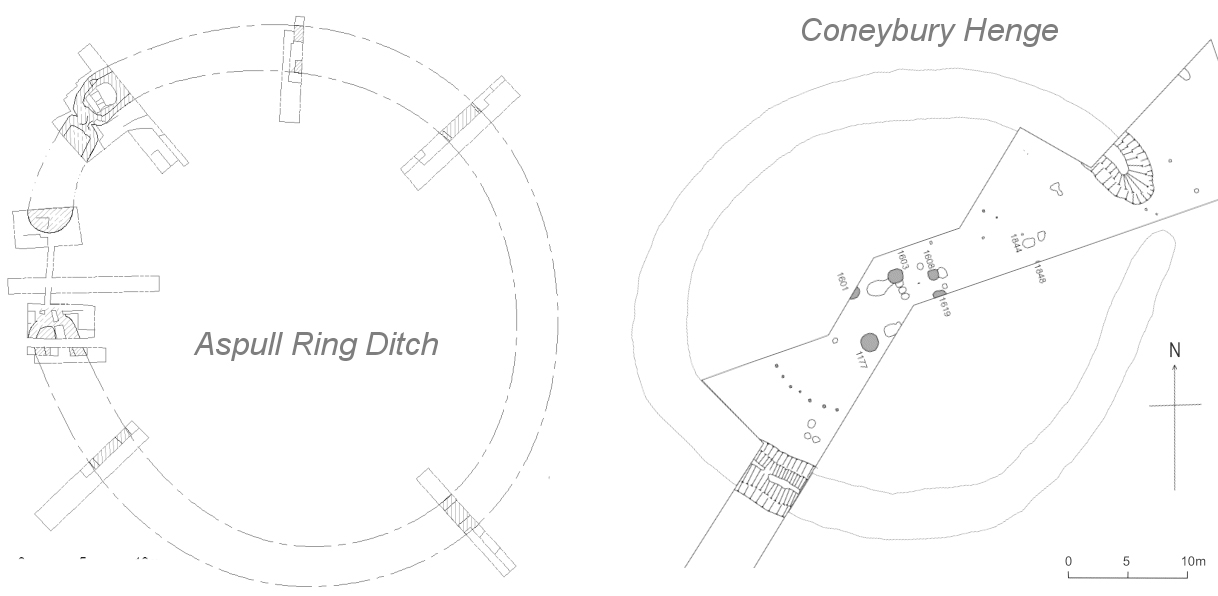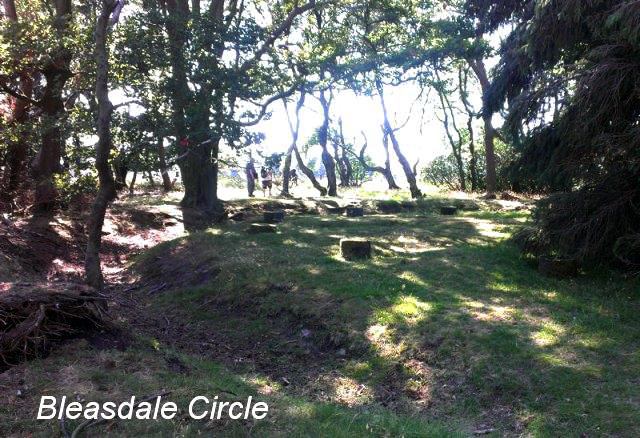
We have now received the result form the carbon 14 analysis of the charcoal found at the bottom of the ditch in Trench 1. It does confirm that our site is prehistoric; however I'm saving the actual date for our meeting on Wednesday. Up to now we have been relying on typology, but this hasn't been easy, as there aren't many sites of similar size and form. Initially the central mound suggested a Bronze Age barrow but, not being perfectly circular and having an entrance, made it more like a Neolithic henge. There are sites with similar configurations to ours known as causewayed ring ditches. A group of these turned up in North Wales and one in particular, at Pentrehobin, has similar proportions to ours (having a 44m diameter ditch 4m wide by 2m deep). Another group on the Isle of Thanet in Kent was excavated in the 1970s and 80s. One, called Lord of the Manor III, even had a central mound like ours. Perhaps the closest, proportionally, to ours though is a site not far from Stonehenge called Coneybury henge. As with ours, it has no outer bank (which is assumed to have been ploughed out) but unlike ours it didn't have a central mound. All these sites are generally dated to the late Neolithic / early Bronze Age and some contain burials, but rarely have central mounds. When these do occur, it suggests maybe a transition period when the newcomers reused the old monuments, before building their own traditional ring ditches and barrow forms. Whatever the date of its construction, there's no denying our ring ditch is a very significant prehistoric monument, perhaps of national importance but certainly something quite unique for the region. We can only imagine what we may discover next year when we start to investigate the central mound.
The Standish Way
Great to be able to prompt this new booklet produced by Jim Meehan and Christine Thompson. It's a guide to three fascinating walks around the ancient Standish-with-Langtree boundary. The first part describes the routes, and the second part describes the historical locations that people pass on the way. It is 56 pages long with some great pictures including one of the Standish Corn Mill excavation we carried out in the 1990s in Elnup Wood and also Martland Mill House which we reported on last year in Newsletter 239. The route also crosses the Roman Road twice, at Brimelow Farm on the Standish Wigan border and Hic Bibi on the Standish Coppull border. Priced £5 with all proceeds going to Wigan and Leigh Hospice, the booklet will be on sale at our next meeting.
Next Meeting
Wednesday 2nd November - at the Real Crafty on Upper Dicconson Street starting at 7.30pm as usual. This month, John Tripper will be telling us about the Bleasdale Circle in the Forest of Bowland.
This scheduled monument lies high up on the peat and moss-covered Bleasdale Fells and is sometimes referred to as a henge. However, cremation urns found under a central mound during excavations at the end of last the 19th century, put it firmly in the mid to early Bronze Age. Like the sites previously mentioned though, it may well have started life as a henge as the surrounding ring ditch had an entrance on the east side. A ring of postholes was also discovered in the centre (now represented by concrete posts). Although much smaller than ours at only 16m diameter, its flat-bottomed ditch (roughly 2m-3m wide by 1m deep) makes it very relevant to our site and may have followed a similar sequence of construction. We paid a visit during the hot summer of 2018, but it was difficult to get a true sense of its size as it was overgrown with trees. John, however, has studied the site in some detail, and has images of the site before the tree growth and also during the 19th century and the later 1930s excavations. Hope to see you there - BA.

|



